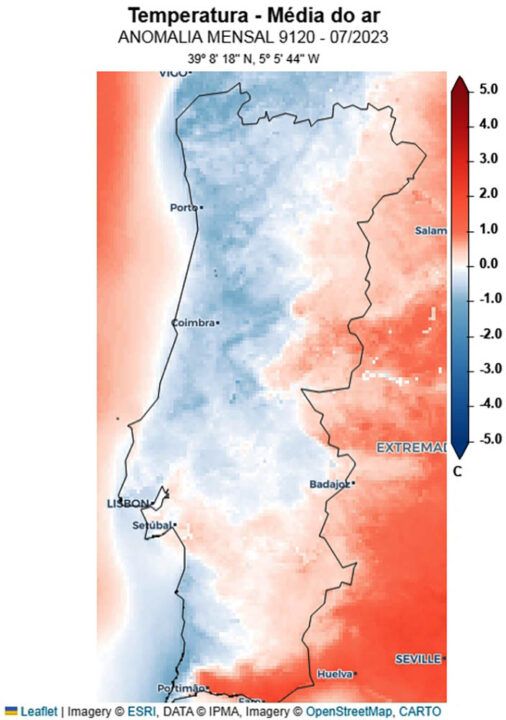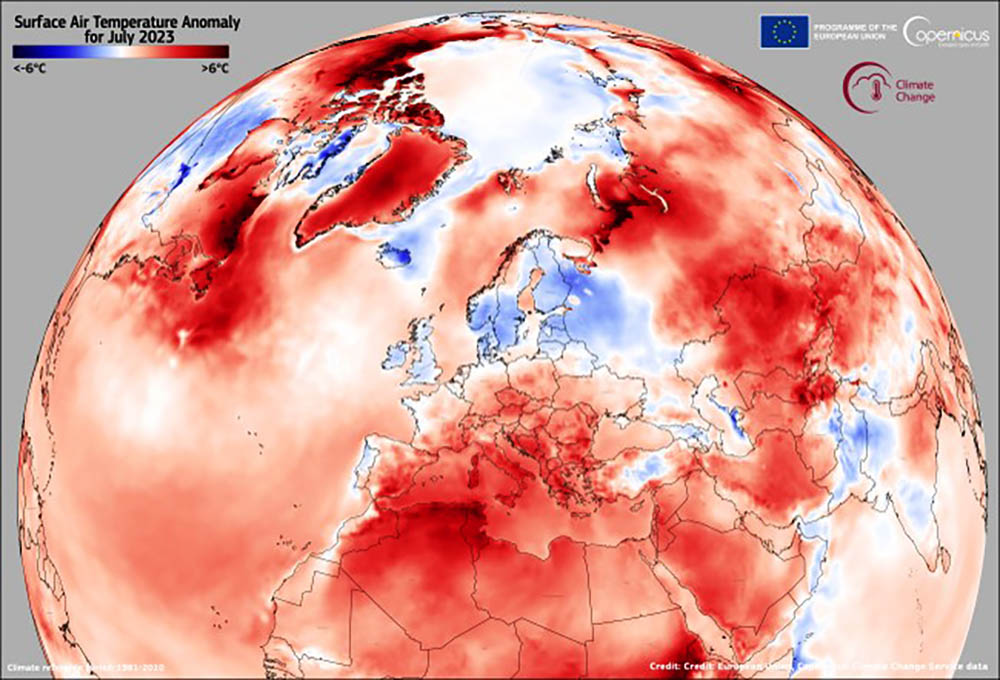After June having already broken records, last month was also the hottest July globally, as long as there are records, announced the Portuguese Institute of the Sea and the Atmosphere (IPMA). However, in mainland Portugal the air temperature values recorded were close to normal.
According to the IPMA, the estimated average air temperature shows a deviation of +0.7 °C in relation to the average for the period 1991-2020.
In several regions of the Northern Hemisphere, particularly in southern Europe, heat waves of high intensity and extension were recorded, with average air temperature anomalies of around +4°C being recorded in Italy, Greece and Spain.
This climatic phenomenon was directly related to the anticyclonic circulation that transported very hot and very dry air masses from North Africa towards the south of Europe.
In North Africa and the Canadian Arctic, very high air temperatures were also recorded, with anomalies of +5 °C and +7 °C, respectively.

Although very high air temperature anomalies have been recorded in the regions of the globe indicated above, in mainland Portugal the air temperature values recorded were close to normal and the precipitation below normal.
The IPMA explains that this situation results from the «prevalence, over the Azores region, of a high atmospheric pressure system (traditionally known as the Azores anticyclone), which caused a north/northwest flow along the western region of the Iberian Peninsula – these air flows with a strong northerly component, close to the coast, are called northerly – transporting more humid and tendentially colder maritime air».
This predominance of the anticyclonic regime, very usual in the summer months, did not allow the creation of conditions for the occurrence of precipitation in a large part of the mainland.
These conditions recorded in July led to an increase in the area in meteorological drought and in its intensity.
Areas in severe and extreme drought have increased in the Alentejo and Algarve regions.
On July 31, 97% of the territory was in meteorological drought, of which 34% in the severe and extreme drought classes.



















Comments